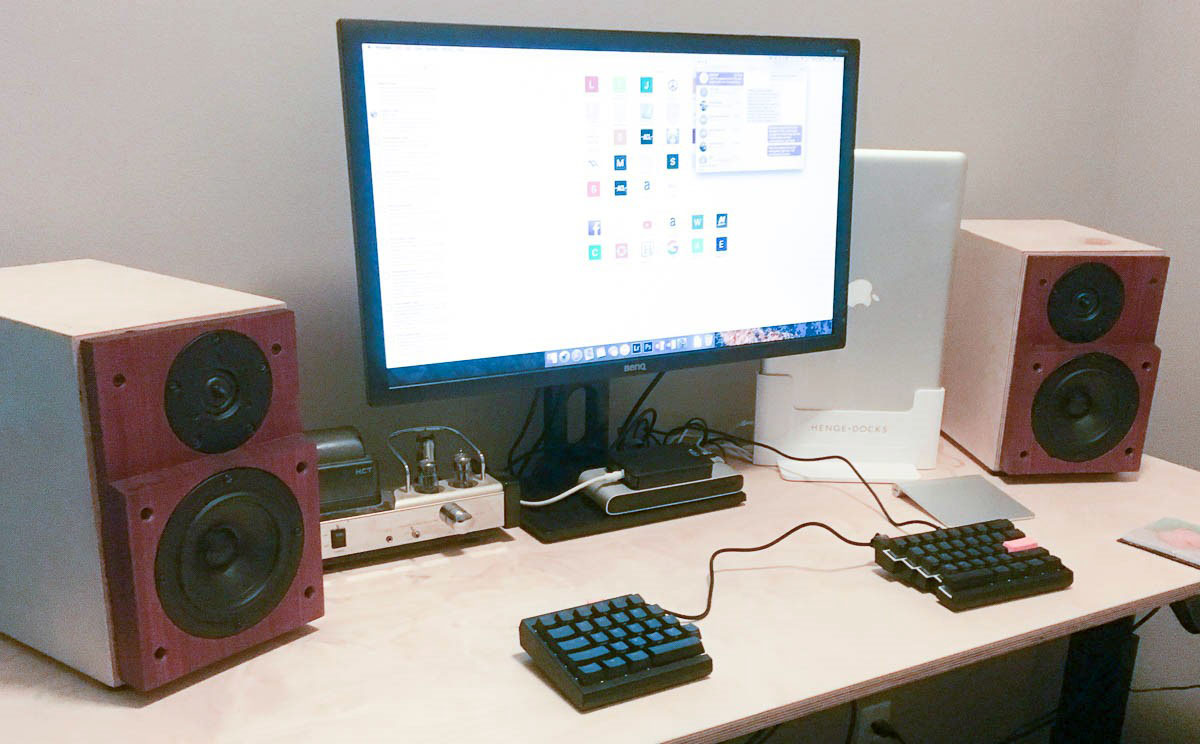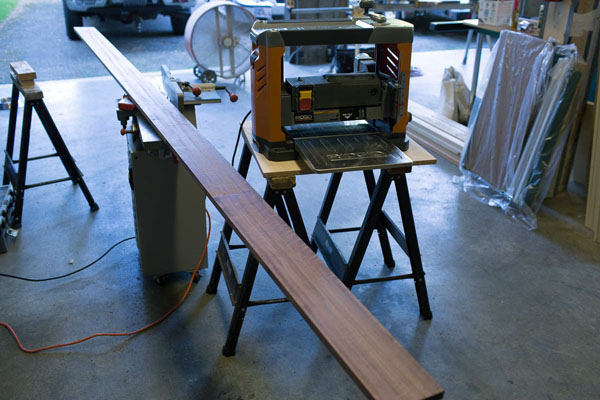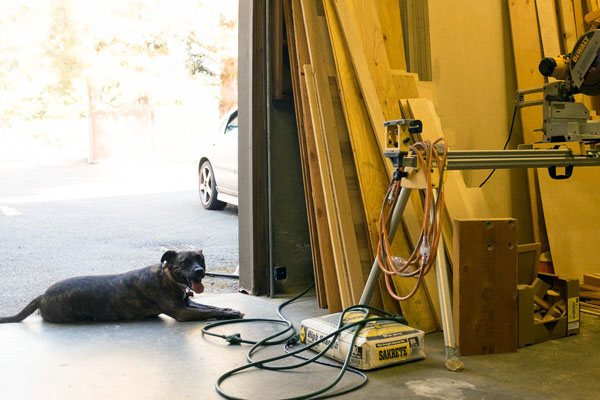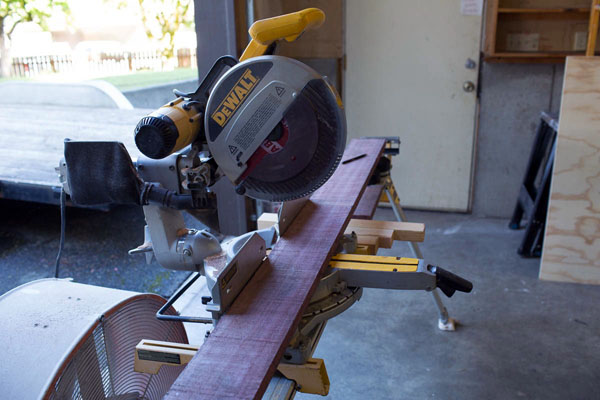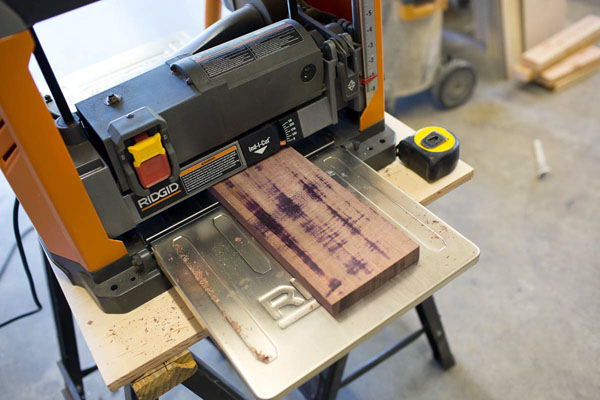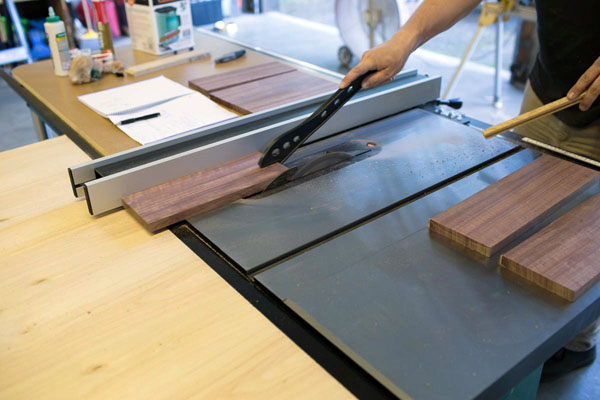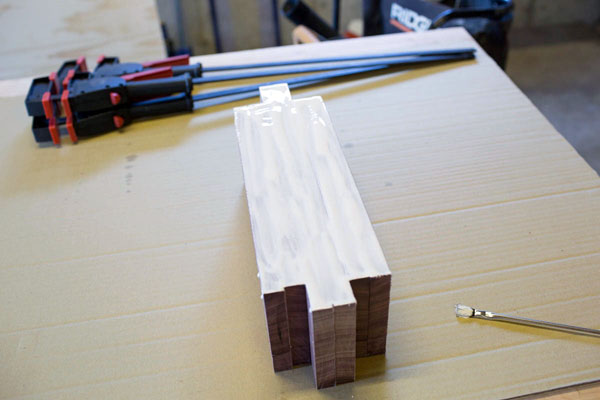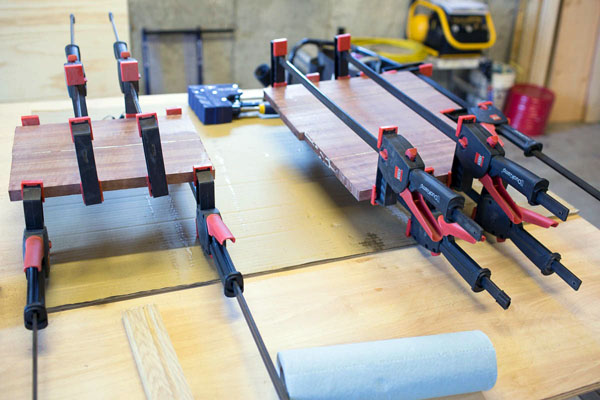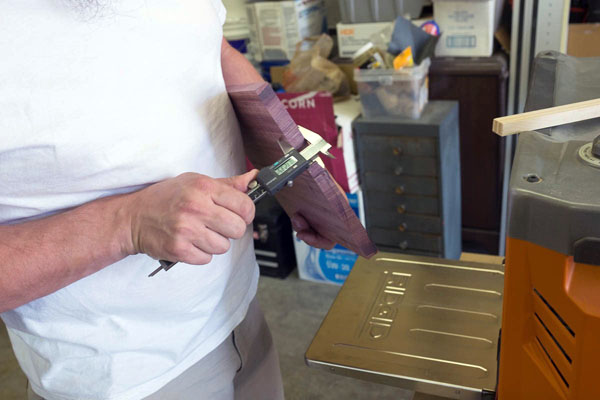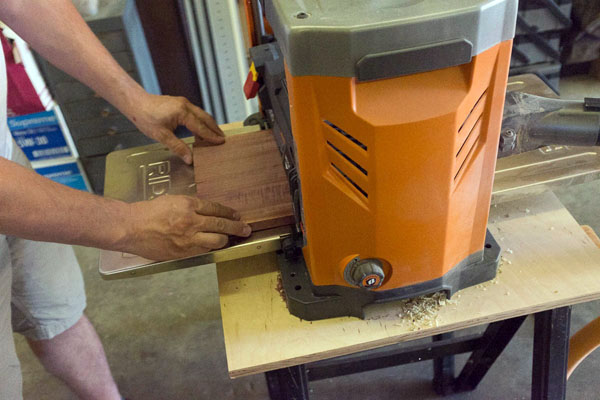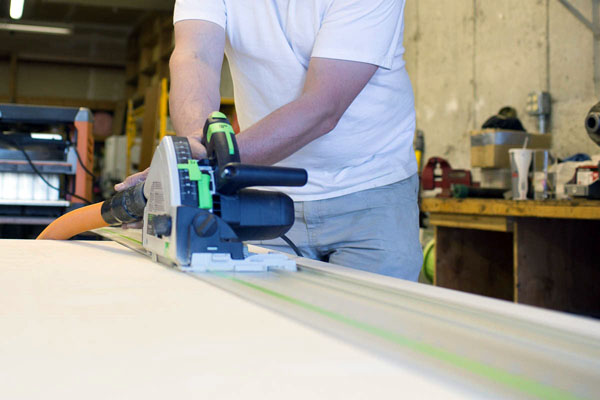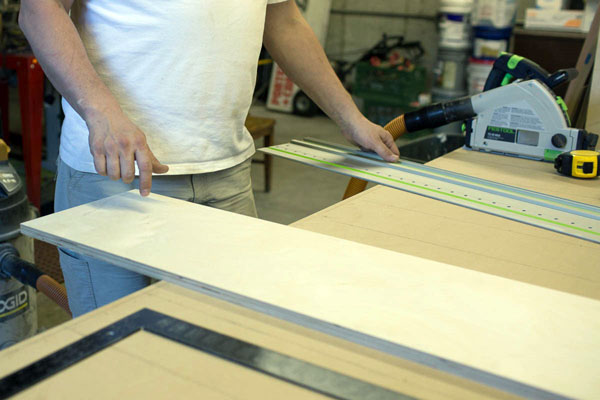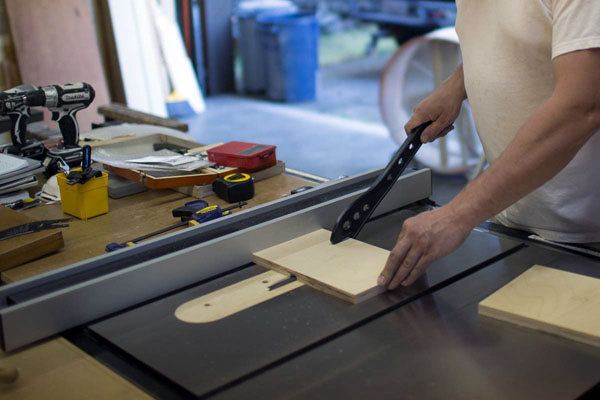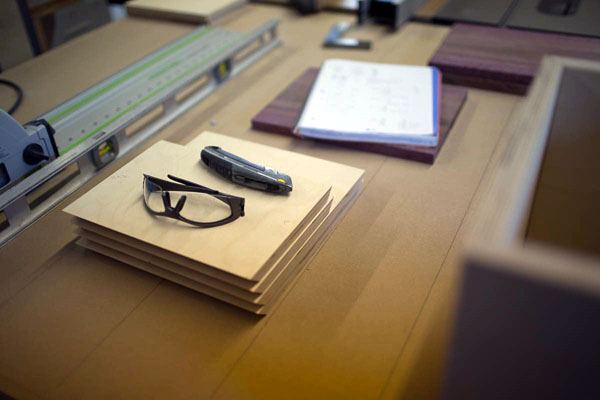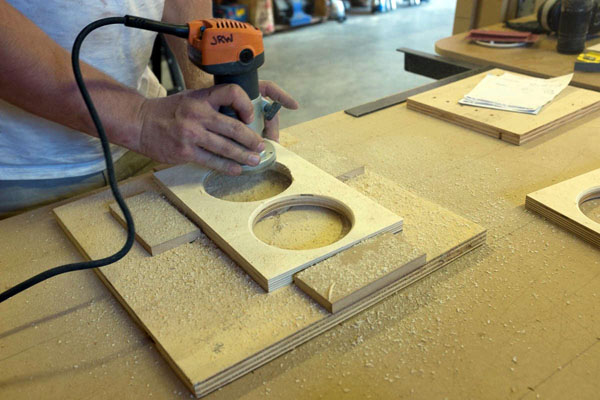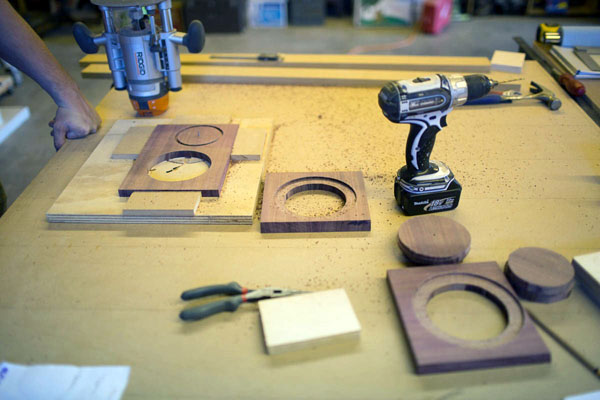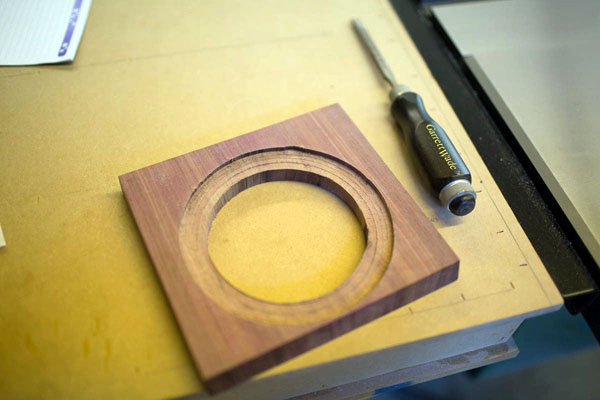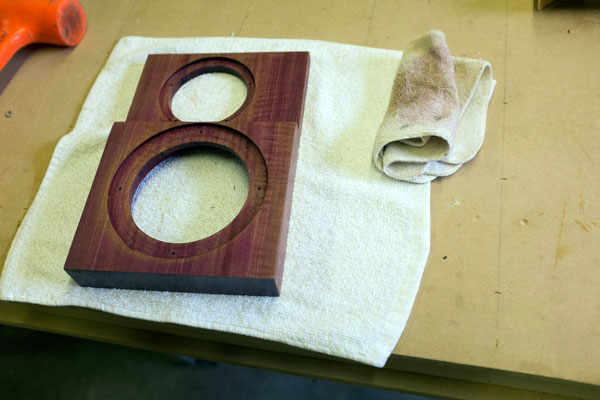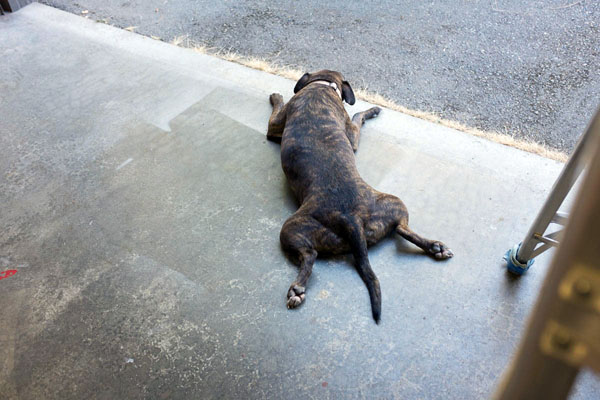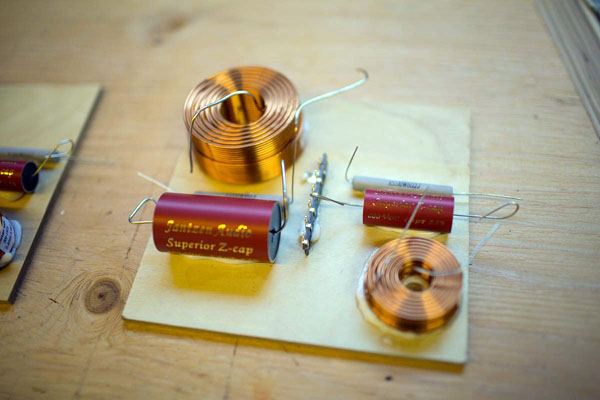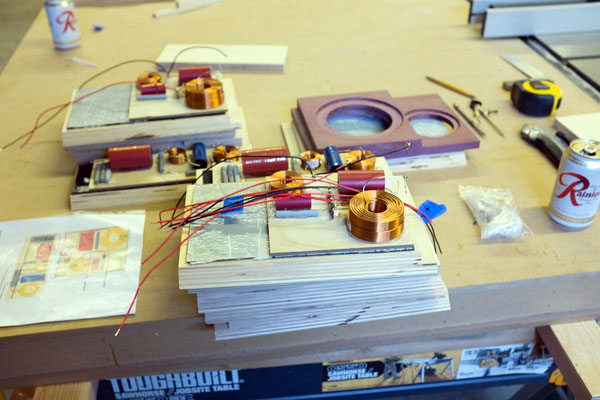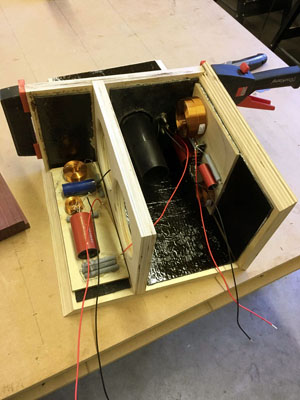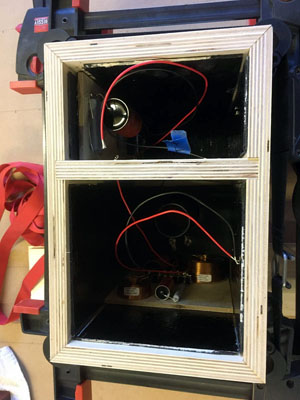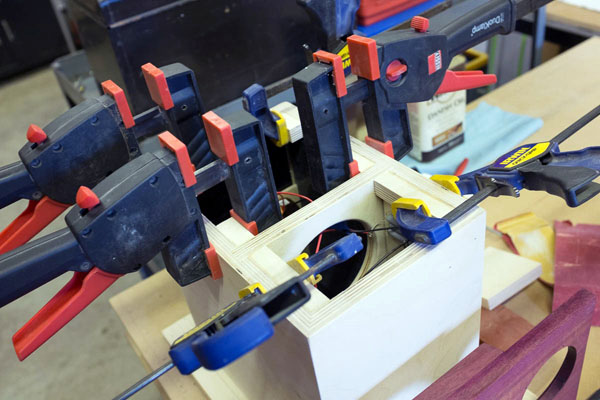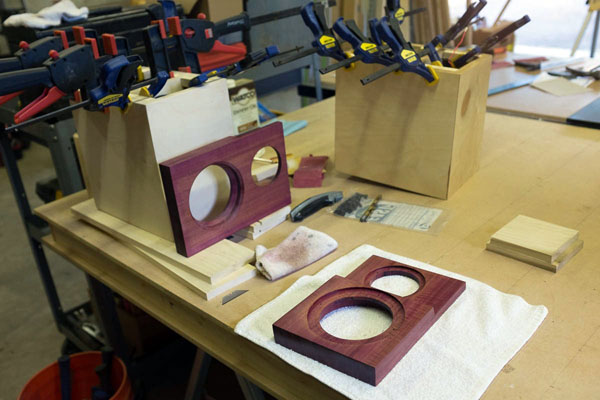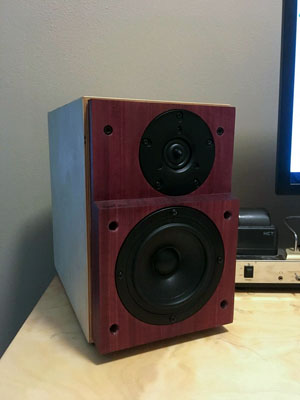Discovery 15, built by Drew
Copyright 2017 © Troels Gravesen
Hello Mr. Gravesen!
Back in May, I had some time off from school and some leftover funds. I
went ahead and purchased your Discovery 15 kit with no real plan or any
idea where to start. Luckily, a friend was building his home woodshop,
and as I helped build his shop, he helped me build this project. I
learned a ton in the process, including what NOT to do next time I want
to make some speakers. There will definitely be a next time. This
project was expensive and time-consuming but also completely worth it.
I’ve never finished a project this rewarding. It was a fun way to spend
time with friends (and my dog) and the end result is something I have
used and will use and enjoy every day.
I wanted to use Baltic birch ply like in your builds, but I don’t like
MDF very much and wanted to use something exotic. I have a pair of
headphones with purple heart cups that I love, so I tried to find some.
Baltic birch ply is expensive and hard to find here in Seattle. The
supplier I found for purple heart also had 5 ft X 5 ft sheets of the
plywood in ¾” thickness. I had to pack up the dog and drive 40 minutes
to pick them up(!)
This build took much longer than I thought it would. I generally only
had one day per week in the shop, and my mistakes meant wasting whole
days (and weeks) just waiting for glue to dry on new parts. I had to
remake several panels due to not routing correctly or putting a dado cut
in the wrong place. The first front panel took three tries, followed by
very carefully making a mirrored one. If you’ve never worked with purple
heart, fair warning: it smells like French cheese and will dull your
tools very quickly. It looks and sounds great though, and I couldn’t be
happier with how the front panels turned out.
As you can see in the photos, I started with a 13 foot board of Purple
Heart, planed it flat, and then sectioned it to make the front panels. I
matched the grain for the glue-up, clamped them together, and ran them
through the planer again when they were dry. My friend cut them to size
on the table saw, then used a circle jig to rout the circles. I followed
up with a chamfer bit, and then glued the two layers together and left
them clamped for several days. I marked out driver mounting holes and
the front panel attachment holes, then used a drill press to bore them
all out in steps- from pilot holes to final dimension.
My friend ripped the Baltic birch ply sheet into the correct sizes for
sides, backs, and braces while I completed the crossovers. Once the
angles were cut for joining the pieces, I cut some asphalt roofing
strips to size, glued two layers together with silicone, and glued those
to the speaker panels. I couldn’t find bitumen pads, so I improvised
with what I could find. I’m happy with the result, but I have some other
methods to try on the next build. I mounted the crossovers and started
the glue up on the cabinets. I cut and glued in the fillets while the
cabs were clamped.
I sanded the cabs with 100 grit, and finished them with 220. Once the
sanding was done, I rubbed the cabs down with Danish oil. Then I used
the drill press to make mounting holes in the fillets, and cut up the
felt and glued the pieces into place. I used a butyl rubber putty tape
to seal the front panels on. I really like that stuff, I was able to
just tighten all of the mounting bolts until the putty squeezed out,
then trimmed the putty back with a utility knife. Then I did the final
wire stripping and soldered the drivers into place.
We fired the speakers up that night, doing a quick polarity check on a
spare amp and making sure no smoke came out. Then we put the speakers up
on stands and connected them to my friend’s McIntosh and spent an
evening drinking beer and listening to records. I was really surprised
at the amount of sound coming from these small speakers- the imaging is
the best I’ve heard, and I could not believe the amount of bass they
produce. Jazz sounds wonderful on them, as does American folk. Guitars
and voices just sound real in a way that my previous speakers couldn’t
do (Boston Acoustic 3W floorstanders, Definitive Technology BP6B). These
little speakers filled a large room with realistic music all evening.
One thing these speakers don’t do in a large room is metal. They fell
apart pretty quickly with complicated music at loud volumes (a
remastered pressing of Mastodon’s “Leviathan,” Opeth’s “Sorceress”).
Luckily, these speakers won’t be living that life.
I chose this design to be a somewhat overkill replacement for my 4+1
desktop speakers for nearfield listening. I used the leftover birch ply
from this build to make a new top for my desk, which now happily houses
my computer, amplifier, DAC, monitor, and speakers. The amplifier is a
little tube hybrid with 12 wpc I’ve had for a decade, and the DAC is an
old Fiio X5. I have about 30 hours on this setup so far and I love it.
The speakers are currently on sorbothane domes (1 ¼”) and I can’t feel
any of the bass notes in the desk until I turn the amp up way too much
for my little office.
Upgrades are coming soon to give these speakers their due- a proper DAC
is in the works right now, and I have my grandfather’s Scott 299
amplifier (all tube, 20 wpc) due back from the shop in a few weeks. I’ll
send an update when the system is complete.
Thanks for all your work in designing these! They sound great and I
enjoyed the process of making them come to life. Feel free to use any or
all of this email and the photos.
-Drew
